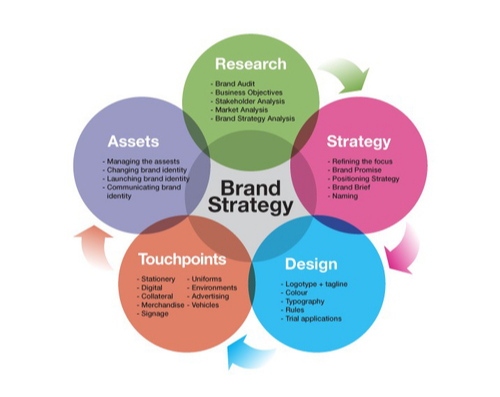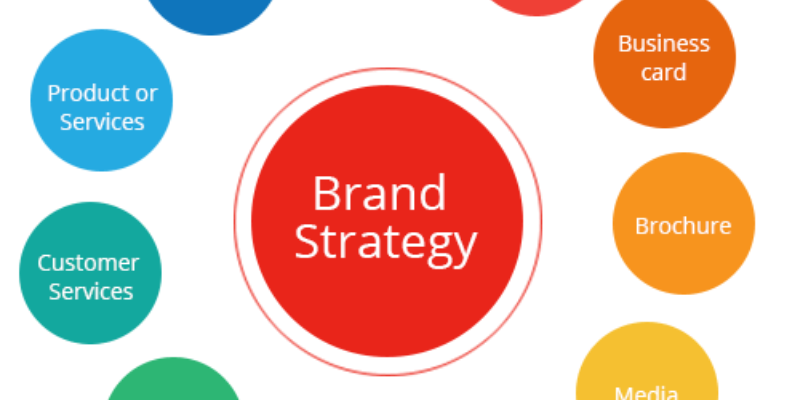This concept of differentiating a product from a similar type of products of your competitors is called as branding. How you create your brand is your branding strategy. Branding may be of anything like people, business, product, service, land or religion. Running your business without a branding strategy is similar to showcasing a toy without a face. A face helps your audience to connect with your values. And the core values of your brand are your business. The Digital world has made the process of brand building much easier and less costlier. Research says, 71% of consumers are more likely to buy from a brand they follow on digital media. Today, in this article I am going to share 5 steps, involved in developing your own branding strategy.

1.Market Research
First ask yourself why your product or service should exist. What kind of problem is going to be solved by it? You need to study which group of people is facing a similar kind of problem that can be solved using your product or service. You have to observe how they are solving the problem at present. Are there any competitors that solve similar kind of problem of target people? If there are, how your competitors are coming up with the solution to target people problem.
All these primary investigations will help you to find your position to fit in this competitive environment. Foundation of your branding strategy should be based on these data.

2. Brand Positioning
The Second Brand strategy is how you want your consumers to feel about your brand. The success of a brand depends on how it is being perceived regardless of what type of brand. A thoughtful positioning strategy can create new opportunities in an oversaturated market. A brand becomes stronger when more people follow. The market research data, will help you to find your target people. You have to position your brand in your consumer’s mind, differently than your competitors. Only being different is not enough. Your brand needs to demonstrate the difference, So that consumers can understand the difference easily. To develop a strong brand you need to own a specific name that no one else is associated with. For example, prestige is to Mercedes, safety is to Volvo. See how beautifully they have monopolized a specific segment of a highly competitive car market, using branding principles.

3. Brand Identity Design
90% of the information transmitted to a human brain is in the form of visuals. But a brand is an intangible asset, an emotional concept. So you have to design a visual identity of your brand, which is tangible and can appeal to the senses. Unlike the brand, brand identity can be seen, touched or heard. It is the symbolic representation of the intangibles like emotion, feelings or essence. So brand identity is the face of a brand. It’s design involves developing some visual assets like brand logo, a logotype with your brand name and tagline. You need to decide on a colour scheme and typography to represent your brand. Brands usually use very few shades of colour which is known as the brand colour template. Colours are very important because each shade of a particular colour represents a particular emotion. Red represents energy, power, passion, love. Blue represents loyalty, confidence, success etc. Where yellow represents happiness, joy, warmth. Your brand consultant can help you to design your brand identity that can best reflect your brand values and create an emotional connection to your consumers.

4.Brand Touchpoints
Each of the brand touchpoints is an opportunity, to build awareness and customer loyalty. Once you have finalized your brand identity design, that is logo, tagline and colour theme, you have to create touchpoints to communicate with your target group of people. Brand touchpoints include business card, leatherhead, website, email address, social media profiles, blog, brochures, business proposals, photography style, product packaging, advertisements etc. You should confirm that each of your brand touchpoints reflects the true essence of your brand to the consumers.

5. Brand Maintenance
The brand-building process does not finish once business cards are printed with the logo and website designed. Growing a brand really takes a long time and disciplined effort. Creating a brand identity design is easier part, but its maintenance is harder. Here consistency is the key. It takes years to develop a successful brand. Regular social media updates in your compatible platforms should be done consistently to build brand awareness. The brand website should be updated regularly basis with new content. You have to take every measure to be on the top of people’s minds all the time. So you understand, brand identity design or creating touchpoints may be the primary steps, but only extensive sharing of them makes the difference.
The implementation of these five strategies effectively helps to grow your brand and create more business.


